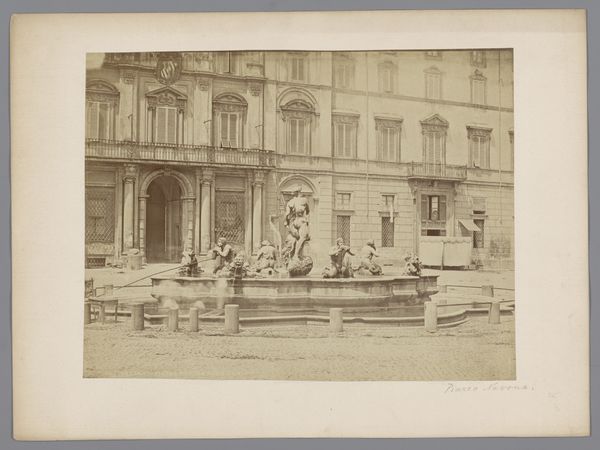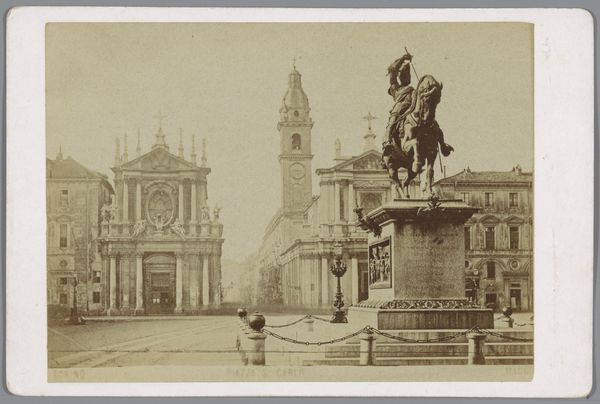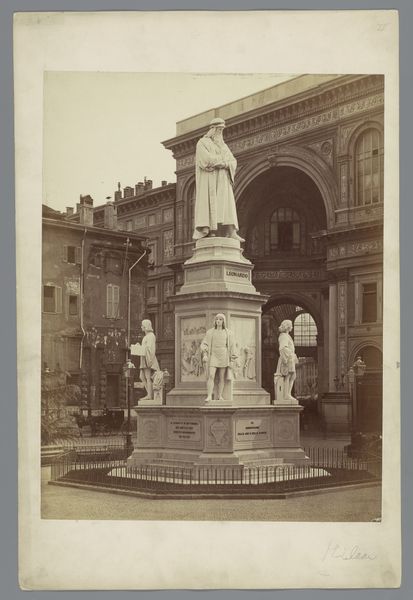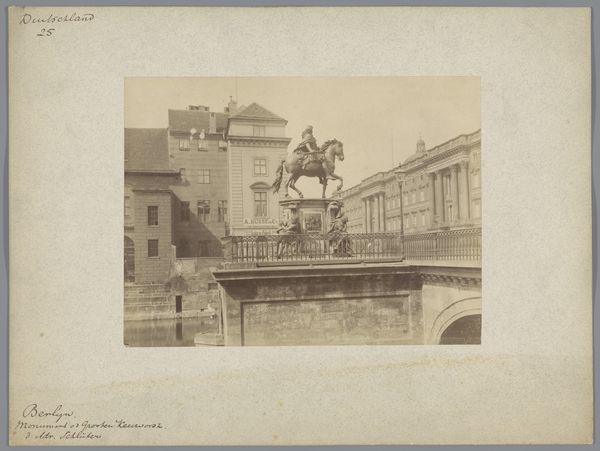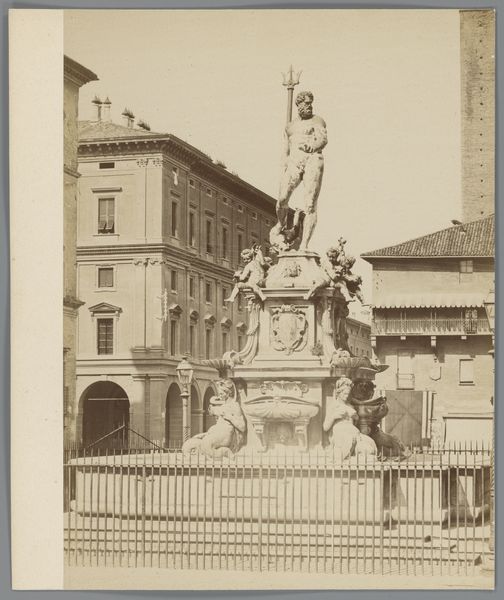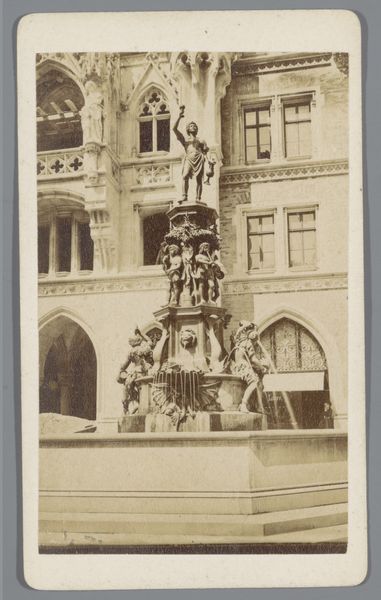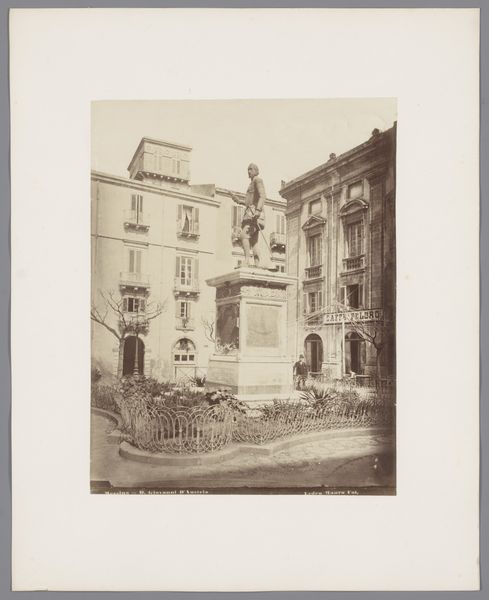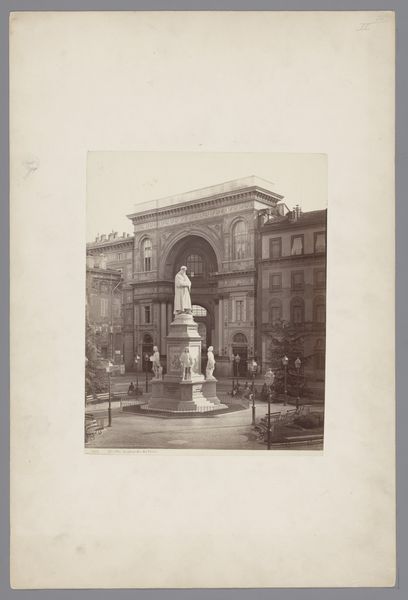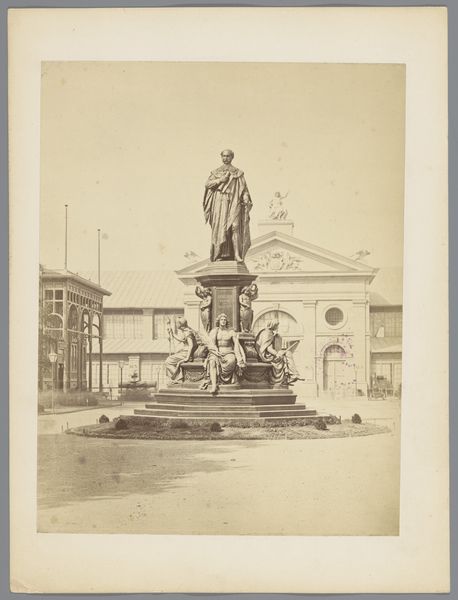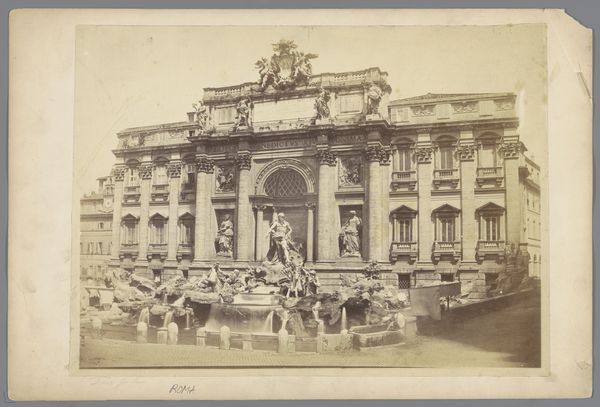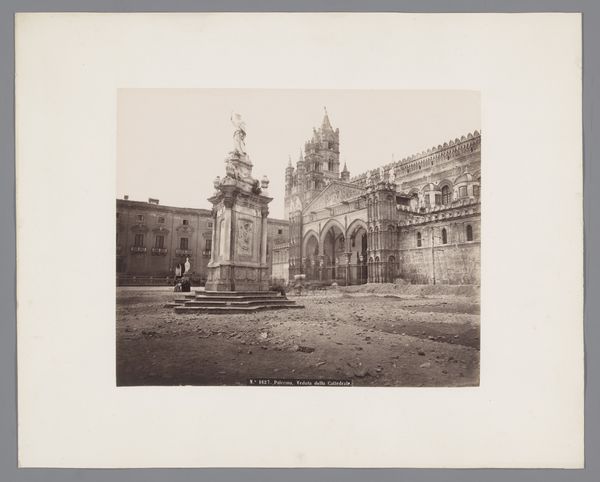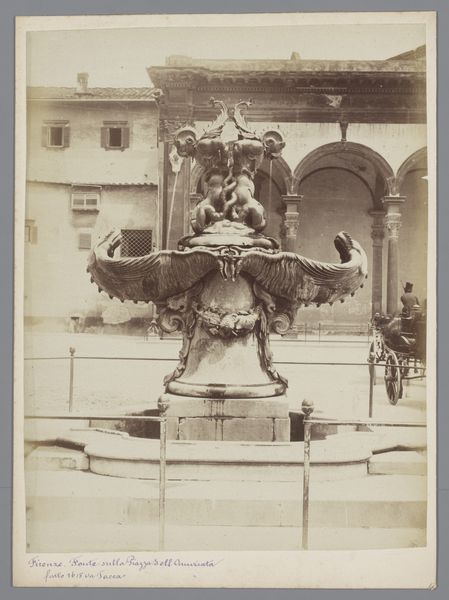
Neptunusfontein door Bartolomeo Ammannati op het Piazza della Signoria te Florence 1857 - 1914
0:00
0:00
photography, gelatin-silver-print
#
portrait
#
statue
#
16_19th-century
#
neoclassicism
#
historic architecture
#
photography
#
gelatin-silver-print
#
19th century
#
cityscape
#
statue
Dimensions: height 181 mm, width 244 mm, height 199 mm, width 250 mm
Copyright: Rijks Museum: Open Domain
Editor: This photograph, taken sometime between 1857 and 1914 by Giorgio Sommer, depicts Bartolomeo Ammannati’s Fountain of Neptune in the Piazza della Signoria, Florence. The gelatin-silver print gives the scene a very classical, almost dreamlike quality. What jumps out at you when you look at this? Curator: What I find striking is the photographic gaze itself. Here, Sommer, operating within a very specific moment of colonial expansion and developing technologies, frames a symbol of Renaissance power and civic pride. This photograph isn’t simply documentation. It subtly participates in a broader narrative of observing, categorizing, and possessing cultural heritage. Do you see how the statue almost becomes an objectified artifact? Editor: I do see what you mean. The way it's presented, almost clinically, separates it from the vibrant life of the square that I imagine it's usually part of. How does the Neoclassical style tie into this, in your opinion? Curator: Neoclassicism, with its emphasis on order, reason, and the ‘ideal,’ was often used to legitimize existing power structures, especially during periods of significant social upheaval. Sommer's lens captures this ideology perfectly. He presents a 'pure', almost sanitized, version of Florence. This resonates with 19th-century Europe’s quest to define itself through an imagined classical past while simultaneously colonizing vast portions of the globe. What stories are silenced by this approach? Editor: That’s a powerful perspective. I never really thought about photography itself having its own bias, but now I see it! Thinking about the historical context helps to show me other perspectives within what I thought was a "simple" picture. Curator: Precisely! Recognizing photography’s active role in constructing narratives, rather than simply recording reality, empowers us to engage more critically with these images. Editor: This has completely changed how I’ll look at photographs moving forward. It is important to view and interpret historical images using critical lenses and perspectives. Thank you!
Comments
No comments
Be the first to comment and join the conversation on the ultimate creative platform.
